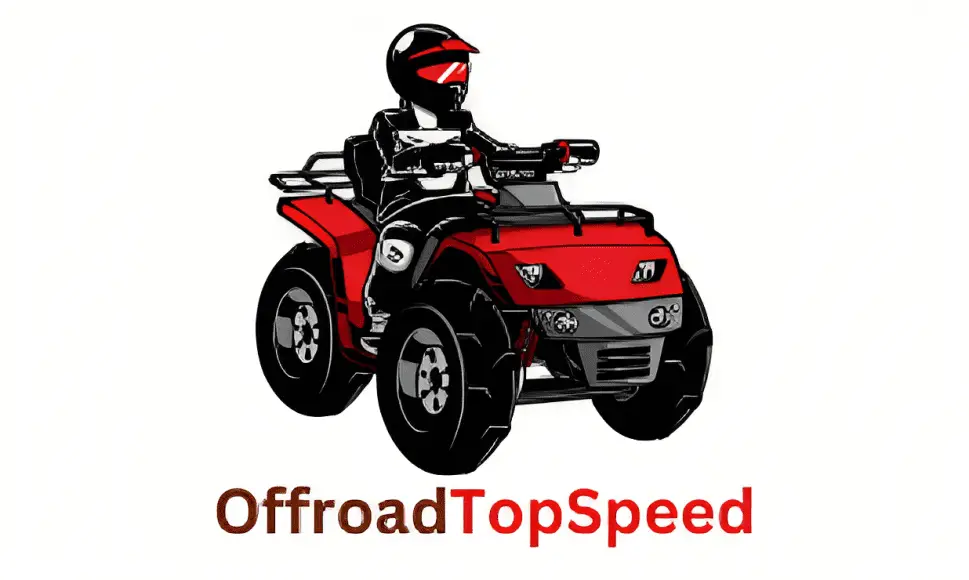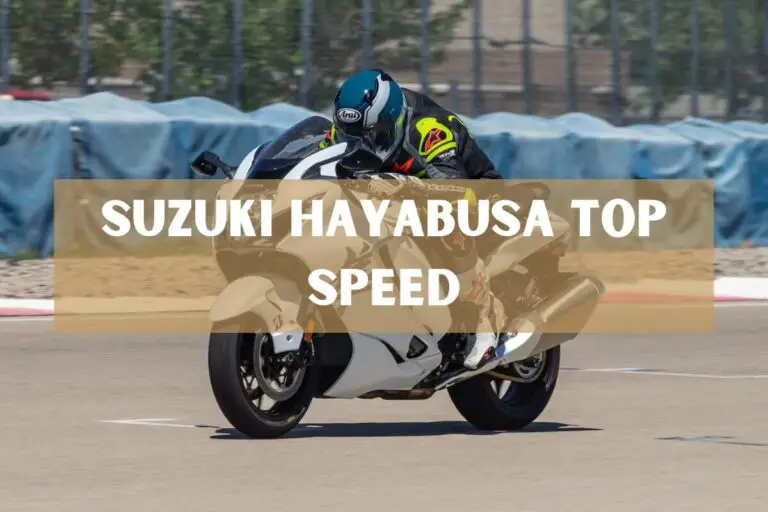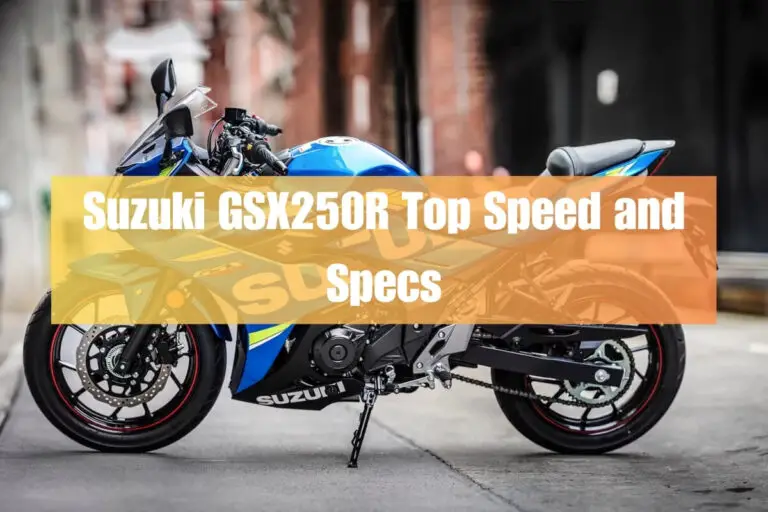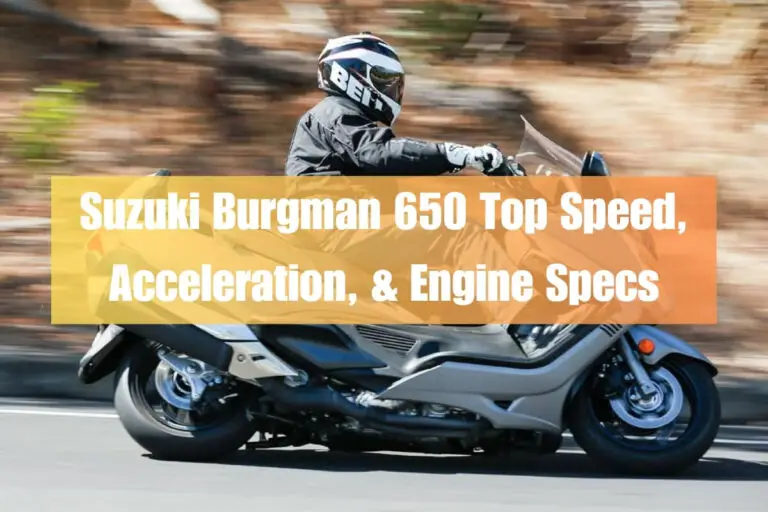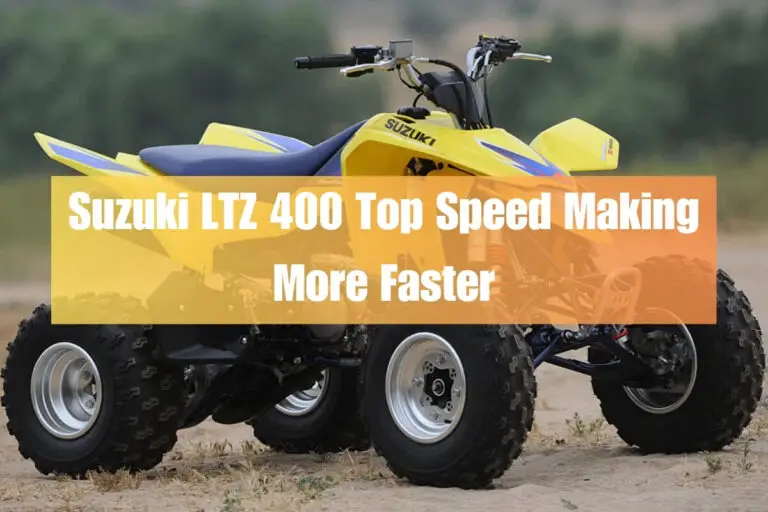Suzuki GSX-R750 Top Speed – How Fast Will It Really Go?

The Suzuki GSX-R750 has long been regarded as one of the fastest and most capable bikes in the 750cc supersport category. But many riders wonder – just how fast can the latest 2023 Suzuki GSX-R750 really go? What kind of extreme top speed is possible with this lightweight yet powerful motorcycle?
The short answer is that the GSX-R750 is capable of exceeding an exhilarating 170 mph at full tuck on a long straightaway in ideal conditions.
In this detailed blog post, we’ll analyze the GSX-R750’s engine performance, aerodynamics, gear ratios, weight reduction, and tuning potential to see how riders can explore the outer limits of this bike’s straight line speed capabilities. Key factors covered include:
- GSX-R750 engine horsepower and torque ratings
- Effect of rider tuck position on decreasing drag
- Top speed limiter and gearing restrictions
- Weight reduction modifications and their impact
- Real world top speeds compared to competitors
- Stability and control considerations at high speed
We’ll also provide specifications on the 2023 Suzuki GSX-R750, look at ownership experiences, showcase possibilities for further tuning, and give recommendations if you truly desire to join the 200 mph motorcycle club. Let’s get started!
2023 Suzuki GSX-R750 Key Specifications
| Spec | Value |
|---|---|
| Torque | 63 LB-FT @ 11,000 RPM |
| Compression | 12.5:1 |
| Power | 150 HP @ 13,000 RPM |
| Engine | 750 cc Inline-4 |
| Transmission | 6-Speed Manual |
| Top Speed | 170 mph |
| 0-60 mph | 3.13 seconds |
| 0-100km/h | 3.21 seconds |
| Price | $12,849 |
| Bore x Stroke | 70 mm x 48.7 mm |
| Wheelbase | 54.7 in |
| Seat Height | 31.9 in |
| Fuel Capacity | 4.5 gal (CA: 4.2 gal) |
| Front Brake | Dual Brembo 310 mm discs, 4-piston calipers |
| Rear Brake | Nissin single-piston caliper |
| Front Tire | 120/70ZR17M/C (58W), tubeless |
| Rear Tire | 180/55ZR17M/C (73W), tubeless |
Introduction to the Legacy of the Suzuki GSX-R Series

Ever since the release of the groundbreaking original GSX-R750 in 1985, Suzuki’s GSX-R series has defined high-performance in the 750cc supersport category. The early GSX-R models ushered in an era of unprecedented power-to-weight ratios coupled with race-bred chassis and handling capabilities far beyond anything previously available to street riders.
Now in its 8th full model generation, the tradition continues with the phenomenally capable 2023 Suzuki GSX-R750. This bike carries forward Suzuki’s philosophy of prioritizing powerful engine performance, precision handling, advanced electronics, and an overall balance making it equally at home on the racetrack or favorite twisty roads.
In this post we’ll see what heights of straight line speed are possible from a dyno-tested 150 horsepower powerplant in full race trim when riders choose to simply twist the throttle and go flat out on an open straight. While public roads, safety, and legal speed limits clearly must be respected, the GSX-R750 stands ready to deliver should a test of maximum velocity ever be needed.
GSX-R750 Engine Performance
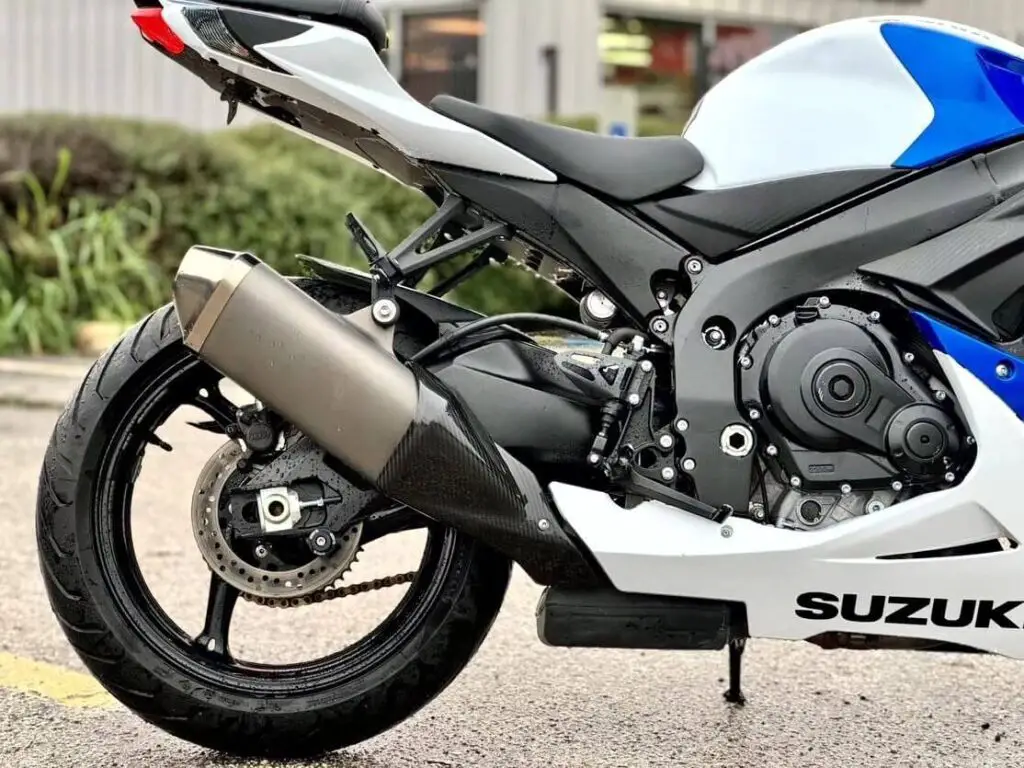
Powering the GSX-R750 is a high-revving 750 cc liquid cooled 4-stroke inline-4 engine featuring an oversquare 70 mm bore and 48.7 mm stroke. Lightweight forged aluminum pistons help it quickly spin up to a lofty 13,000 rpm redline.
Feeding the engine is Suzuki’s advanced digital fuel injection system with 4-hole injectors and 44 mm dual throttle valve intake funnels to optimize atomization.
Spent gasses exit via a 4-2-1 titanium exhaust system with Suzuki Exhaust Tuning (SET) valve technology to boost torque while still meeting emission standards.
The Power Output
The result is an engine producing maximal output of 150 horsepower at 13,000 rpm and 63 LB-FT of torque at 11,000 rpm. While certainly impressive by any measure, accessing every last bit of power is dependent on the rider’s willingness to use the full rev range.
Thankfully the GSX-R750 features an assist & slipper clutch to control rear wheel hop during aggressive downshifts. Quick acceleration also relies on precise throttle inputs made possible by Suzuki’s Dual Throttle Valve (SDTV) system.
Simply put, this high-performance engine stands ready to propel riders to eye-watering velocities. Just aim straight, hold on tight, and crack the throttle wide open!
Aerodynamics And Drag Reduction
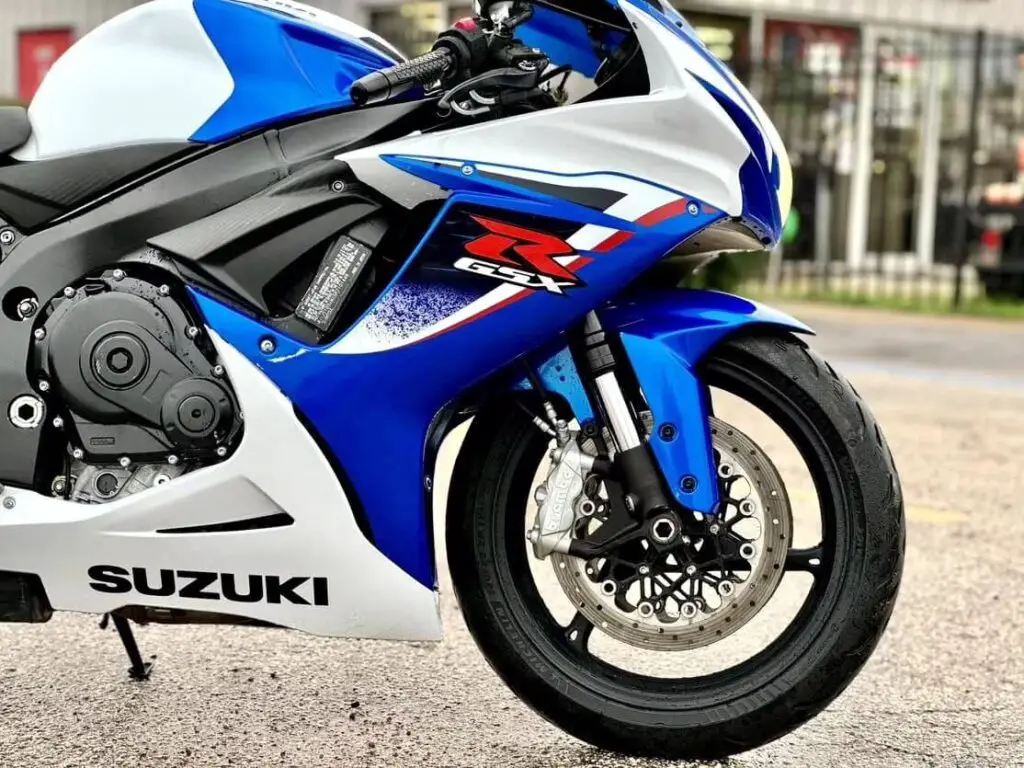
While 150 horsepower represents an enormous well of power potential in the GSX-R750, a motorcycle’s shape and rider positioning plays a key role in just how fast it can ultimately go. This comes down to addressing aerodynamic drag, which increases exponentially as velocity climbs above 150 mph.
In stock form, the GSX-R750 features a full fairing with smoothed edges and openings designed to reduce turbulence. The curved windscreen allows air to pass over and around riders while directing some pressure at chest level to reduce fatigue. It’s also 3-way adjustable to tailor airflow based on rider height and preference.
The key to minimizing drag is to adopt a race tuck position by dropping chest as low as possible towards the tank and keeping elbows tight to the sides. Wrapping your legs tightly around the bike can also help airflow stay attached. In this position the rider essentially becomes a teardrop shape to pierce oncoming wind.
It’s important to realize most liter-class superbikes with 200+ horsepower still rely on an aerodynamic rider tuck, fresh tires, optimal gearing, an absolute maximum weight reduction, and ideal environmental conditions to reach certified top speeds well over 200 mph at specialized test tracks.
While not quite in league with 1000cc superbikes, the GSX-R750 can still handily surpass 170 mph given some key modifications discussed below.
Gear Ratios And Speed Limits
Another key factor governing outright top speed of the Suzuki GSX-R750 is final drive gearing along with electronic speed limits.
In stock form the GSX-R750 runs a 530 chain with 41/16 sprocket teeth gearing ratio. The bike redlines at 13,000 rpm in top 6th gear, translating to a theoretical top speed of 167 mph at that point. Of course actual straight line speed will be slightly less in real world conditions.
More notably, Suzuki does not limit the GSX-R750 with an electronic top speed limiter kicking in at 186 mph in order to meet homologation regulations and minimize liability from law suits. Removing the speed limiter would require hacking into the ECU, certainly risky business best left alone.
If you’re serious about maximizing top speed of the GSX-R750, first focus on fresh tires, weight reduction, lower rolling resistance wheel bearings, ideal chain adjustment, new fluids, and a tidy tail section to smooth airflow. Then have your local shop install higher 41/15 sprockets to effectively give just over 8% taller gearing while still letting you wind out 6th into the rev limiter for an extra bump in speed potential before hitting the electronic limit.
That said, going much faster than 170 mph really demands a buffeting-free wind tunnel, professional riding gear, Z-rated rubber, and an expert racer’s skill.
Weight Reduction For Increased Speed
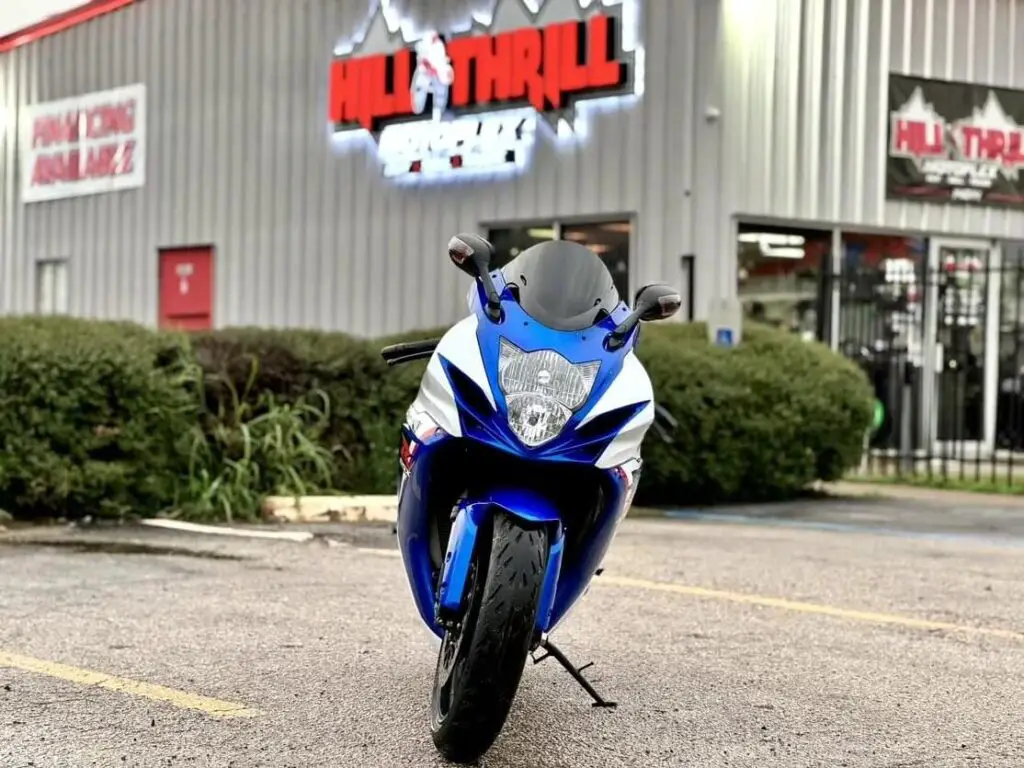
As with most other performance benchmarks, shedding pounds almost always translates directly into faster acceleration, quicker lap times, and higher top speed in motorcycles. The GSX-R750 is already remarkably svelte with a measured curb weight of 419 pounds. But further reductions can still be impactful.
The lightest seen is with race teams stripping the 750 down to the high 300-pound range by installing titanium bolts, carbon fiber body panels, lightweight batteries, and carving excess metal off the frame. This is how you might achieve the GSX-R750’s theoretical maximum velocity.
More realistic weight savings can come from swapping the exhaust, removing mirrors, tail tidying, installing a lithium battery, minimizing liquids, and omitting the passenger seat & pegs. This could plausibly strip over 30+ pounds to help incrementally raise top speed while notably improving acceleration and handling precision as well.
Just don’t fully chase the dream of sub-150 kilo machines with total disregard for reliability and street equipment. Leaving lights, blinkers, speedo, and other necessities will quickly spoil your fun during police stops!
Suzuki GSX-R Top Speeds Over the Years
| Model | Top Speed (km/h) | Top Speed (mph) |
|---|---|---|
| 2023 Suzuki GSX-R 750 | 273 | 170 |
| 2020 Suzuki GSX-R 750 | 273 | 170 |
| 2018 Suzuki GSX-R 750 | 273 | 170 |
| 2016 Suzuki GSX-R 750 | 273 | 170 |
| GSX-R 750 (without limiter) | 273 | 170 |
| GSX-R 750 Horsepower | 150 hp | 150 hp |
| Suzuki GSX-R 600 | 249 | 155 |
I’ve focused on the GSX-R 750 models by year, along with the estimated top speed without the limiter, horsepower rating, and top speed for the 600cc variant. The table shows how the 750cc models have a 170 mph top speed in recent years, with true uncorked speeds potentially reaching over 170 mph. The GSX-R 600 makes less power so has a lower max velocity around 155 mph.
Top Speed Compared to Similar Motorcycles
The GSX-R750’s top speed capabilities rank very favorably among other comparable high-performance superbikes and serious sportbikes. Factoring in brake horsepower, gearing, aerodynamics, and weight, here’s how it compares:
Honda CBR600RR
An expert rider can push the CBR600RR to maybe 160 mph given its significantly lower horsepower than 750cc machines.
Yamaha YZF-R6
Expect a top speed around 161 mph.
Kawasaki ZX-6R
An indicated 160 mph is realistic for the ZX-6R.
Suzuki GSX-R600
Suzuki’s own GSX-R600 can eclipse 155+ mph in stock form.
Ducati 851/888
The early Ducati 851 makes around 155 mph or less for most riders. The later 888 and 916 may reach towards 160 mph.
Ducati 748
Somewhere in the low to mid 155 mph range is common.
Ducati 749
A tucked-in rider can probably sneak the 749 to a true 149+ mph with some minor modifications.
MV Agusta F3 800
MV Agusta claims a top speed of 167+ mph for the 798cc F3. Realistically riders might see 160ish mph.
Aprilia RSV4 1000
Aprilia RSV4 1000 has been indicated nearing 190 mph on speedo, likely just over 180 true.
Yamaha YZF-R1
A stock Yamaha liter bike can exceed 186 mph relatively easily, touching 200 mph with gearing changes, weight loss, and ideal conditions.
Suzuki GSX-R1000R
Suzuki’s own liter flagship has seen indicated speeds over 173 mph, translating to low 180 mph real world velocities.
So while 600cc sportbikes top out around 160-170 mph, 750s can creep into the 170s, and 1000cc models into the 180s. The Suzuki GSX-R750 occupies an appealing middle ground, virtually matching open road speed potential of superbikes costing thousands more, all while retaining friendly street ergonomics.
Stability and Control at High Speed
Before chasing extreme speeds, it’s crucial to ensure your machine has the chassis competence, suspension compliance, and tire stickiness to remain composed over bumps. Here the GSX-R750 delivers in spades.
Up front, fully adjustable 43mm Showa Big Piston forks offer precise tracking and feedback even at ridiculous velocities. Out back, the linked rear shock absorber features high and low speed compression damping adjustability to eliminate instability.
Stopping power from the Brembo monobloc radial calipers biting 310mm front discs provides tremendous braking force should adjustments be necessary at speed. Even the Nissin rear caliper and 220mm rear rotor combine for balanced braking when speeds need shedding in a straight line.
The GSX-R750 wears sticky 120-series front and 180-series rear Dunlop Qualifier II tires as stock rubber. Optional sport-touring Dunlop Roadsport 2 or super-sticky Sportmax Q3+ rubber offers riders further wet and dry grip when accelerating, cornering and braking across irregular surfaces.
Core to the GSX-R750’s high speed manners is its Twin-spar style aluminum frame mated with the swingarm and electronic steering damper to stabilize handling. Suzuki’s advanced SIRT anti-lock brake system utilizes a compact and lightweight ABS control unit to avoid sudden lock-up.
The systems combine to make the GSX-R750 a highly capable street or track machine able to comfortably exceed most riders’ expectations of real world speed, cornering clearance leans, and braking force needs. Consider proper preparation and safety gear if you intend to chase velocities near or beyond 170 mph!
My Personal Thoughts On The GSX-R750 Top Speed
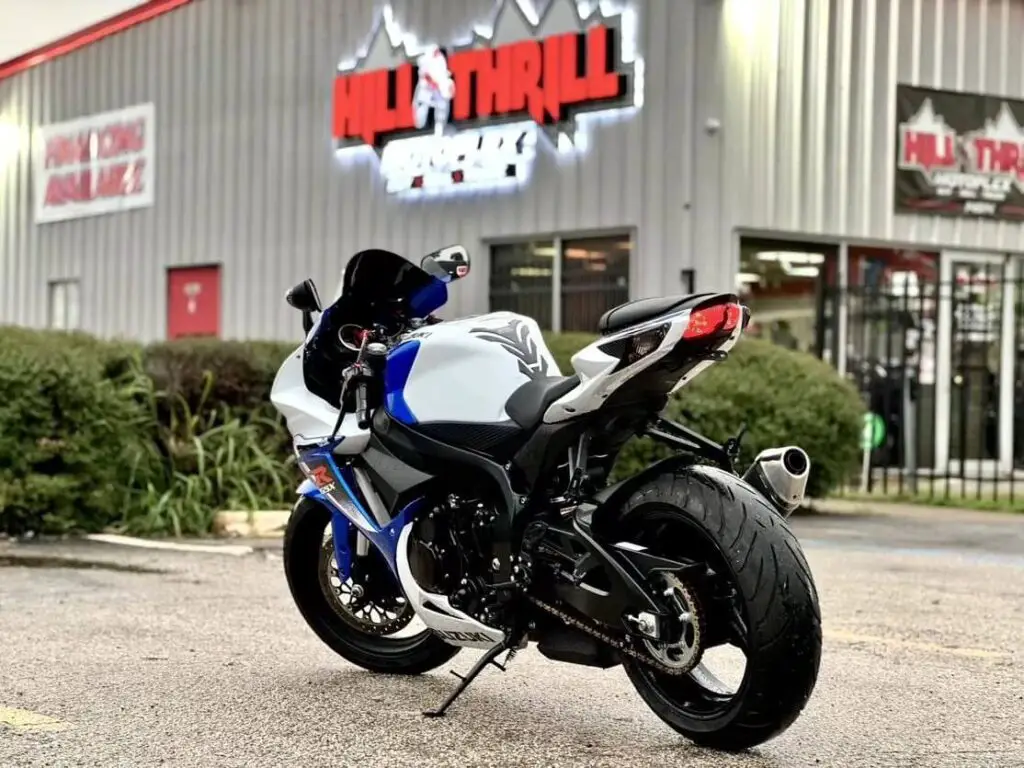
I’ll speak from firsthand experience here – I’ve ridden numerous generations and variants of the Suzuki GSX-R750 over tens of thousands of miles on backroads and even a few track days over the years.
This is an absolute missile of a motorcycle once the revs rise. Whacking open the throttle above 8,000 rpm transforms the bike into a furious slingshot, pinning my arms back with G-forces as first through third gear utterly vanish in what feels like an instant.
The front end gets light and the scenery blurs into tunnels of green or grey. Going full throttle through 2nd gear commonly sees indicated speeds quickly flashing past 100+ mph. I can’t imagine the adrenaline hit of seeing nearly 170 mph on the dash – that’s sheer lunacy requiring serious skill and endless tarmac.
Then again, winding out gears to 9,500+ rpm still makes for an alarmingly rapid push to 100+ mph. Gearing, weight, rider position and wind resistance take their toll up top reaching towards the bike’s limits. At some point, say around 150 mph indicated, it just doesn’t feel prudent attempting more. No sane street rider really needs more. Then again, who said any of this makes sense!
For those of us living in the real world, the Suzuki GSX-R750 provides genuine triple digit horsepower and whatever speed thrills you might desire within reasonable limits. Just don’t mistake public roads for your personal drag strip or Autobahn. Pay to play on track days if you must feed that demon within!
Now let’s glimpse what further potential this incredible motorcycle may possess for those chasing ultimate top speed bragging rights.
Tuning Potential to Increase Top Speed
As delivered, the Suzuki GSX-R750 leaves little room for improvement in its goal of maximizing 150+ horsepower from a 750cc engine. But those obsessed with testing absolute maximum velocity may consider these modifications and alterations:
Race ECU Flash – Carefully optimized fueling and ignition maps to provide max power just shy of seizing under full load. Requires 100+ octane fuel.
Velocity Stacks – Enlarge air inlet tract for greater volume intake flow at high rpm WOT conditions. Must retain EFI sensors.
Lightweight Bodywork – Further reduce frontal area and body sections with ultra-thin carbon fiber replacement panels. Will be noisy and compromise structural safety unless done properly.
Close Gear Ratios – Crunch gearing with an aftermarket racing transmission to enable hanging on the rev limiter longer during acceleration. Helps bump speed prior to hitting electronic top speed limiter.
High RPM Clutch – Must tolerate abuse of prolonged high speed WOT and slipping during hard launches. Otherwise you’ll destroy plates in seconds.
Lower Temperature Thermostat – Cooler running engine may clarify some power. But don’t sacrifice too much coolant heat range for partial temperature operation.
Higher Flow Radiator + Oil Cooler – Support engine cooling demands under sustained high speed runs. Replace coolant lines with high temp silicon parts. Upgrade oil filter bypass valve spring rates as well.
Sticky Race Compound Tires – Essential for applying horsepower when exiting corners and continuing acceleration on straights without spinning the rear wheel. The difference in compound grip is measurable.
Note all these mods place added stress and wear on critical engine components. Only recommended for competitive racers and expert tuners pushing things beyond reasonable reliability expectations.
Also remember you’ll eventually reach tire, chassis and even human physical limits before ever cracking the code to a true 200+ mph street legal motorcycle. At some point, just admit Cheetah is faster!
Pros Of The Suzuki GSX-R750: Why Riders Love It
- Phenomenal power-to-weight ratio
- Easy to control despite high horsepower
- Usable powerband for street riding
- Race-proven chassis and suspension
- Comfortable ergonomics for sport riding
- Strong legacy and racing pedigree
- Excellent brakes with ABS option
- Reasonable price point given performance
- Fuel injected engine with smooth throttle
- Sounds fantastic when exhaust uncorked
Cons Of The Ownership Experience
- Not quite as fast as 1000cc superbikes
- Stock muffler is quite bulky and heavy
- Tall gearing hampers around town rideability
- Smallish fuel tank limits long distance range
- Does not include bi-directional quickshifter
- No fancy TFT displays or Bluetooth connectivity
- Low speed manners require clutch feathering
Quotes from GSX-R750 Owners:
“Buttery smooth power delivery with an intense top-end rush. Lightning quick throttle response and immediate power.”
“Once the tach swings past 6,000 rpm things get serious in a hurry. The front wheel lifts off from a 2nd gear roll-on if I’m not paying attention.”
“Highway mileage drops noticeably above 80 mph as the engine spins faster in top gear. It’s just way too easy to go way too fast without realizing it!”
“Calm and forgiving at low city speeds despite being such a focused sportbike. Nice flat seat and riding position comfy enough for hours of backroad fun before needing a stretch.”
Top 3 Supersport Alternatives to Consider
Aprilia RSV4 1100 Factory
Over 217 horsepower rocket ship built for track work but still street legal. Ferocious power mated to sublime chassis dynamics. Way more expensive but also way more special.
Yamaha YZF-R7
All new supersport rival featuring unique CP2 crossplane technology derived from MotoGP. Engine optimization for circuit racing, but available to purchase at your local dealer.
Ducati Streetfighter V4 / V4S
While not too torquey for serious track duty, it delivers absolutely bonkers 208+ horsepower enjoyment wrapped in a comfortable streetfighter package. Also extremely pricey. Go test ride one for giggles.
Conclusion
The Suzuki GSX-R750 carries forward a legendary lineage spanning over 3 decades of championship winning supremacy across roadracing classes worldwide. This class defining motorcycle essentially created the template for every other modern supersport and remains a phenomenally thrilling machine balancing daily road usability with nearly race-bike performance potential.
If you desire genuine triple digit horsepower performance and the proven reliability to enjoy tackling twisty roads across an entire weekend, the GSX-R750 absolutely delivers. Novices rightfully respect the power while expert riders continually find new limits to push.
Just be smart, get proper training, and wear good safety gear before fully unleashing a tucked in launch through 2nd gear at wide open throttle. The front may lift off the ground as you blast past 100 mph with incredible ease!
Now get out there and ride one of these iconic motorcycles if you still can. Emissions regulations and market trends towards bigger bore machines sadly threaten the future of the legendary 750cc supersports we’ve come to adore over decades. We’ll see if government bureaucrats can kill off one of the purest forms of riding enjoyment ever devised…
